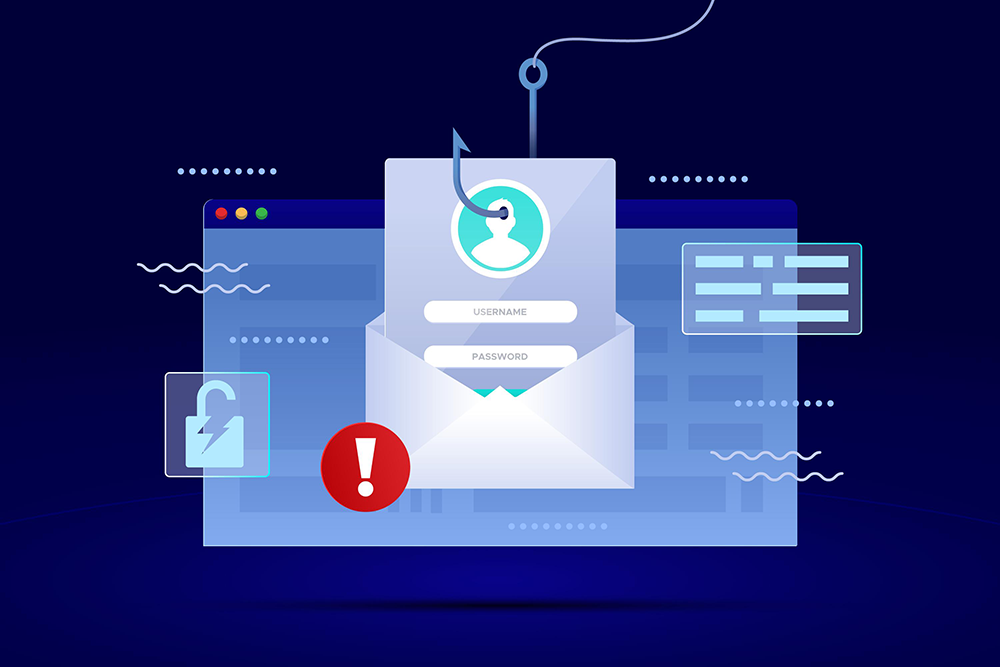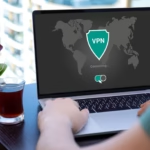Recent Blog
Check on Our Social Media
All Our Blogs

What Is Phishing and How to Avoid It?
Imagine this: It’s an ordinary morning, and you are drinking your tea when an email appears: “URGENT: Suspicious activity detected. Verify Now!”. Heart racing, you click the link, enter your login. All looks good, until you realize that boom, you have just been a prey to phishing!
Welcome to the world of phishing, where cyber attackers disguise themselves as trusted sources and steal your personal and sensitive information. In this blog, we’ll dive deep into this deceptive phishing world, what it is, how it works and most importantly- how you can protect yourself from falling for these online traps.

What is Phishing ?
Phishing is a type of cybercrime in which attackers impersonate trusted entities to trick users into revealing sensitive information such as passwords, credit card numbers, or banking credentials. “Phishing” comes from “fishing” where the attackers fish for personal and sensitive data in an ocean of users.
The Many Faces of Phishing
Phishing wears many disguises – each designed to trick you in a slightly different way.
- > Email Phishing- This is the most common and classic form, where attackers send emails that appear to come from trusted sources like your bank, streaming service or online store. The message creates a sense of urgency and panic- urging you to click a link or download an attachment.
- > Spear Phishing- This is a personalized attack which may include your name, your workplace or reference to a recent online activity of yours, which makes it look more real. For example, you get an email from your colleague or friend that contains malware or leads you to a phishing site.
- > Smishing- Phishing through SMS is known as “Smishing”. A typical example is “Your package couldn’t be delivered. Click to reschedule delivery.” But one click and you are phished.
- > Vishing- Voice phishing or Vishing occurs using phone calls instead of messages. They sound professional, friendly but they are fishing for your data using fear or fake authority.

How Phishing Works ?
Phishing is like a clever magic trick performed by cybercriminals who mask themselves as reliable sources. They create fake emails, websites, messages or phone calls that look so convincing to the people that it’s hard to spot the difference. This setup is designed to fool you into trusting the message without feeling anything fishy.
Next, these attackers trigger strong emotions like fear, urgency, curiosity or excitement by sending messages like, “Your bank account is at risk!” or “You have won a lottery! Claim now!”. Their motive is to create such a situation that makes people react quickly without thinking which leads to clicking on malicious links or entering personal details on false sites. In the end, phishing enables attackers to take over your personal data and use it for theft, fraud or further cyberattacks.
Why is Phishing a Major Cyber Threat ?
Phishing is one of the biggest and widespread cyber threats today with an estimated 3.4 billion spam emails being sent daily. These attacks use trickery and deception and do not exploit software weaknesses, which makes detection and prevention much more difficult. Almost more than 90% of data breaches start with a phishing attack, and in 2024 alone, phishing attempts increased by 65% globally. This clever manipulation lets criminals break into private accounts, cause significant financial harm, and steal identities- all of which affects millions of people and businesses across the world. In fact, the average cost of a phishing-related breach for businesses is estimated at over $4 million.
Due to phishing relying on the human side of security, the best protection for users is staying alert and informed to ensure that they are not the next victim.
Real- life Phishing Attacks
Let’s have a look at a few high-profile phishing attacks, to see how expensive a single click can be.
The Google and Facebook Scam
From 2013 to 2015, Facebook and Google suffered a huge loss of $100 million due to a prolonged phishing scheme. The attacker posed as a vendor who had worked with the companies in the past and sent a series of fake invoices, which both Facebook and Google paid. The scam remained undetected for several months and the phisher was able to collect the funds through smartly disguised emails and invoices.
This scam could have been prevented by implementation of multi-factor authentication, validating payments and verification of vendor information.
2014 Sony Pictures Phishing Attack
Sony Pictures suffered a major cyberattack in 2014, when a group of hackers named “Guardians of Peace” gained access to their internal network. They sent fake emails to the employees with the aim to steal login credentials. As soon as they broke in, they stole a massive amount of sensitive data such as personal information, unreleased films and confidential corporate documents. They leaked a part of the stolen data publicly, causing severe reputational and financial damage to Sony.
This attack could have been prevented by the implementation of robust email security measures, advanced threats detection and training about phishing attacks to employees.
How Do Security Tools Catch Phishing?
Usually, your email service or antivirus quietly works behind the scenes to keep you safe. Here’s how they work:
- > Spam Filters: These help catch fishy emails and send them straight to your spam folder.
- > Email Authentication (DMARC, SPF, DKIM): These are like ID cards for emails. They help check if the email really came from who it says it did.
- > Safe Link Checking (Sandboxing): Some email services open links in a secure “test space” to make sure they’re not hiding malware before you click them.
- > Attachment Scanning: If an attachment has viruses or hidden traps, security tools often block or warn you about it.
- > AI and Machine Learning: Newer tools use smart tech that “learns” how phishing emails look, making it easier to block tricky ones.
These tools help a lot, but they’re not perfect—that’s why staying alert is still super important.
Simple Tips to Stay Safe Online
While phishing threats continue to grow, protecting yourself can be simple with the right precautions. A few mindful tips can help reduce the risk. Here are some tips that will help you from falling for these scams.
- > Verify all communications- Be careful with unexpected messages, specially those that create a pressure to act immediately. Check for red flags like unfamiliar email addresses, grammatical mistakes or unusual requests.
- > Double-check links before clicking- Before clicking on a link, hover over it to see where it will lead you. If anything appears suspicious, type the website’s address directly on the browser to go there safely.
- > Use multifactor authentication (MFA)- Adding an extra verification step, like entering a code sent to your phone, can greatly improve your account security. Even if anyone gets your password, MFA will make it hard to gain access.
- > Regularly update your software- Keep your devices protected by installing the latest updates for your operating system, web browser and security software. These updates often address the security vulnerabilities that attackers could try to exploit in phishing attacks.
- > Use secure websites- When entering sensitive information online, confirm the site uses HTTPS, indicated by a padlock icon in the browser. This ensures your data is transmitted securely.
- > Report suspicious activity- If you suspect a phishing attempt, report it immediately to your IT department or service provider. This helps protect others and prevents further incidents.
- > Stay informed about new trends- Phishing methods keep evolving constantly, staying updated is key. Regularly read about the emerging scams and share the knowledge with your family and friends to help them stay safe as well.
Phishing and the Future
Phishing is evolving quickly, with cybercriminals becoming smarter and more creative with their tricks. As technology improves, these scams are getting harder to spot, which means we need stronger ways to protect our personal information.
Here are some of the new tricks attackers are using:
> AI-Generated Phishing: Hackers now use artificial intelligence to write emails that sound exactly like your friends, family, or coworkers. These messages are often so convincing that it’s hard to tell they’re fake.
> Deepfakes: These are fake videos or voice recordings made using advanced technology. They can make it look like someone is saying or doing something they never really did. For example, you could receive a video of your boss asking you to transfer money—but it’s completely fake. That’s why deepfakes are so dangerous—they feel real even though they’re not.
With scams getting smarter, it’s more important than ever to slow down, stay alert, and double-check anything that feels off. Using strong passwords, turning on multi-factor authentication, and staying updated about new phishing tricks can help you stay safe.
Stay informed, stay cautious, and help others do the same — because one click can make all the difference.
References:
https://www.cisa.gov/news-events/news/avoiding-social-engineering-and-phishing-attacks
https://www.ibm.com/think/topics/phishing
https://www.ncsc.gov.uk/guidance/phishing
Need help developing cybersecurity policies for your organization? Contact us, we can guide you through the assessment, development, and implementation process tailored to your specific needs and industry requirements.
Location
Nashik | Mumbai | Bengaluru | Dallas
contactus@quasarcybertech.com
Call Now
+91 97306 91190
Quick Links
Our Offerings
Copyright 2025 © All Right Reserved | QLeap Education & Trainings



